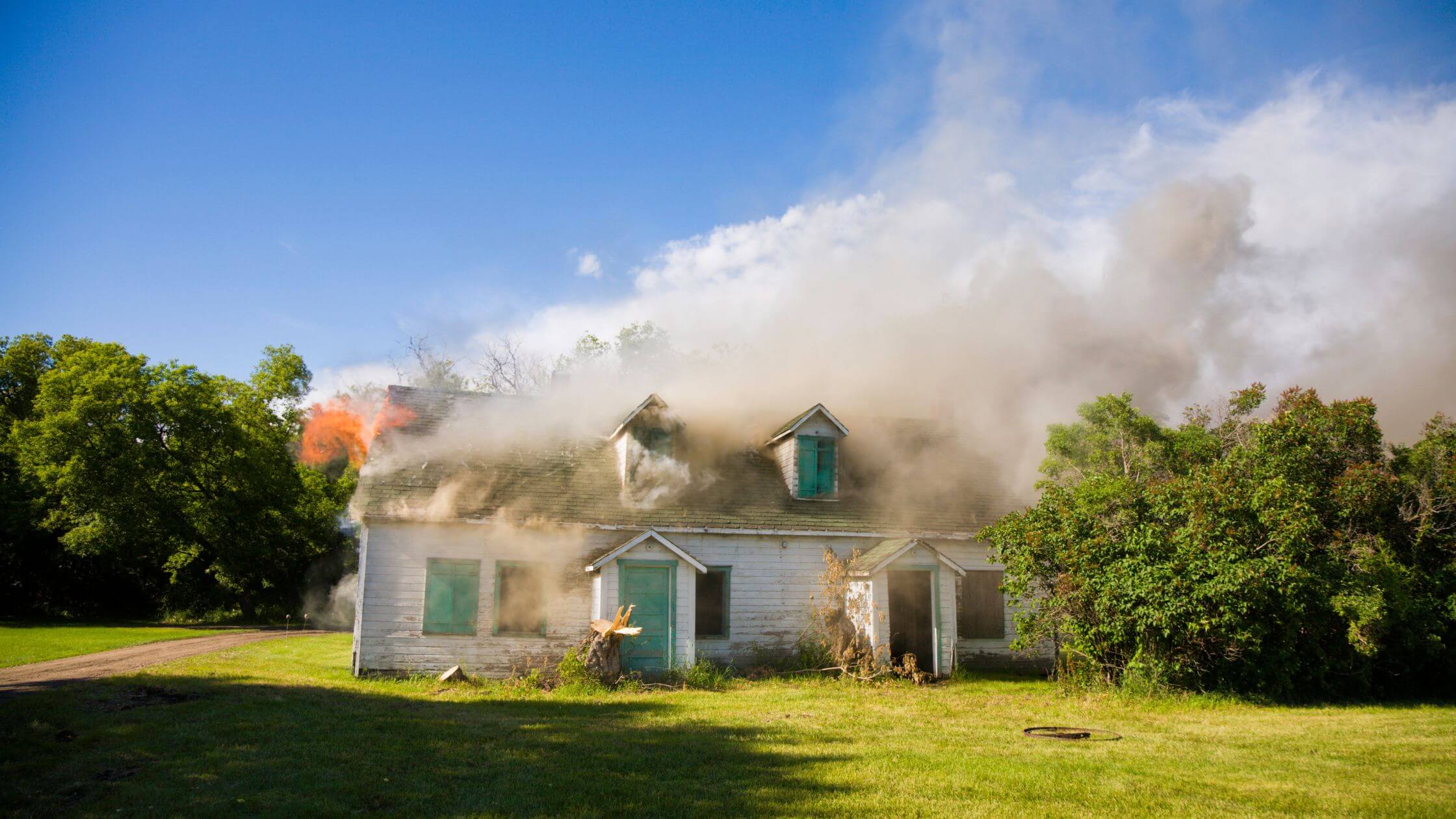Holiday house fire incidents peak on Thanksgiving Day, with the U.S. Fire Administration noting nearly a twofold increase in open-flame fires on Christmas and New Year’s Day.
Even worse, Christmas fire fatalities and property loss are both 34% more than typical. Lights, candles, greenery, and other bright decorations are all part of the holiday season. But regrettably, having so many festive items scattered throughout your house can also increase the risk of a fire, thus causing extensive damage to both your home and belongings. In such unfortunate circumstances, homeowners may find themselves needing to sell a fire-damaged house as it often times the more economical option.
It is simple to understand why late November through December is one of the busiest periods for house fires when you consider the additional cooking and baking that goes on during this time of the year.
Common Reasons for House Fires During Holidays
To help ensure a safe and enjoyable holiday season you should be aware of some of the main reasons why house fires start over the holidays and what you can do to avoid them. So let’s take a look.
Christmas trees
During the holiday season, live Christmas trees are involved in one of the worst kinds of fires. Indoor trees can quickly catch fire and burst into flames if they are not properly hydrated and thus dry up. This type of fire can happen in a matter of seconds.
To avoid a Christmas tree fire:
- Consistently check that your tree is properly watered.
- When hanging lights on the tree, look for any electrical problems and replace any broken bulbs: If the light strings are damaged, torn, or exhibit other issues, don’t try to repair them. Instead, throw them away and purchase a fresh pair of lights.
- Shut off any heat sources that are near the tree.
- Unplug your tree overnight and when you’re not home.
Also, when selecting a tree, go with the most recent tree you can find. The majority of the trees sold by typical merchants were already cut weeks earlier. Therefore, picking a reputable nursery or cutting your tree is the better option. Also, make sure an artificial tree is flame-resistant if you decide to utilize one. A freshly cut tree can drink one gallon of water in 24 hours. To ensure your tree stays hydrated, make sure the water level in the stand remains above the base of the tree and never drops too low. An appropriate stand should have the ability to hold one quart of water for every inch of its stem’s width.
It’s crucial to position your Christmas tree at a safe distance from heat sources, such as fireplaces and heating ducts, to avoid excessive drying and promote longevity. Connect your lights properly and only use permitted lighting. Pick lighting that has undergone testing from a reputable testing facility, such as Underwriters Laboratories (UL). It is recommended to limit the use of three or fewer light strands or extension cords that are connected. It is also recommended to use non-flammable ornaments. Avoid using pine cones and other combustible ornaments on your Christmas tree since they can give fuel to a fire.
Electrical Issues
Make sure all lights, extension cords, and other electrical wires are labeled particularly for outdoor use before stringing lights outdoors. When hanging lights on your property, use UL-rated clips and stay away from conventional staples and nails.
More safety tips for avoiding electrical fires during the holiday season include:
- Never combine several extension cables.
- Check for frayed wires and broken bulbs, and remove any that are present
- Never run three or more strands of lights end to end.
Burning candles
According to the National Fire Protection Association, a heat source such as a candle was responsible for being too close to the tree in 25% of all Christmas tree fires.
Candles are a fire hazard all year long, but during the holidays, more people choose to light them inside their homes. Place burning candles far away from your Christmas tree, fresh foliage, and other flammable decorations. Never leave candles burning when you’re not home or even in a room that you are not in.
Place candles on stable bases, or even better, encase them in hurricane globes. A lit candle must ALWAYS be supervised. LED candles without a flame provide a secure atmosphere-setting alternative to traditional candle options that involve an exposed wick to prevent candle fires.
Stoves
Getting sidetracked while preparing a holiday feast in the kitchen happens effortlessly. However, food left unattended on the stove, especially during the holiday period, is a significant cause of house fires. Therefore, it’s essential to keep a watchful eye on your cooking equipment and make sure you’ve turned off both the oven and burners after use.
Holiday Outdoor Lighting
When it comes to hanging lights outside, ensure the safety of your setup by utilizing hangers or clips that have been certified by UL. Damaging the wiring with staples or nails heightens the likelihood of a fire breaking out.
In conclusion, try to avoid the temptation to keep your lights on without any breaks throughout the year. They are susceptible to weather damage and squirrel damage. Because of this, safety experts advise removing outside lights within 90 days.
Outdoor Burning Piles
When burning piles outdoors during a holiday season, it’s important to be aware of the potential dangers and environmental impacts. To minimize the risks and preserve the environment, make sure to check local regulations, choose a safe location, use fire-safe materials, keep the fire contained, and attend to the fire at all times. Supervise the fire, keep children and pets away, and follow safety guidelines to prevent accidents. Enjoy outdoor burning piles while minimizing the risks and preserving the environment by following these guidelines.
Fireworks
To stay safe during the holiday season, follow these tips when using fireworks: supervise children, only buy from reputable sources, store safely, use in open areas, don’t relight malfunctioning fireworks, have water nearby, and avoid illegal fireworks. Follow local laws and regulations, and it’s best to let professionals handle fireworks if unsure. This important step will ulimately save you from the hassle of needing to sell a fire-damaged house in the event of a fire incident.
You can avoid a long repair process and get money for your house quickly by selling it in as-is condition to We Buy Fire Damaged Houses. We pay great prices and in all cash. Fill out the form below to learn more.
Photo by Spencer Davis on Unsplash


